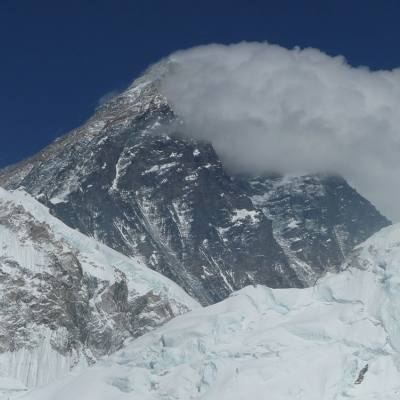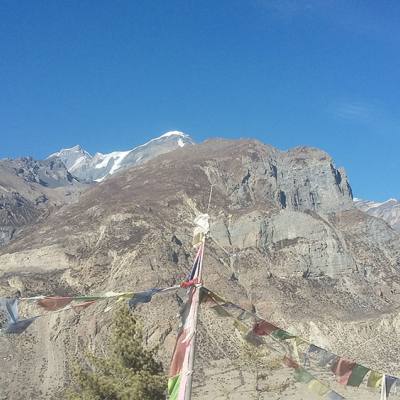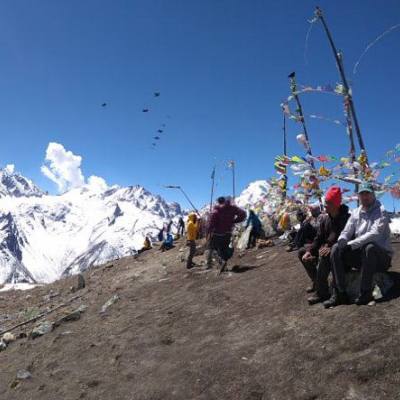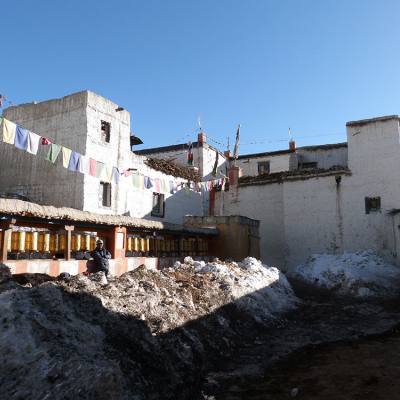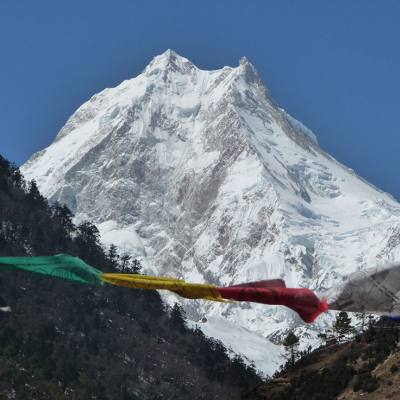Trekking in Nepal
TREKKING IN NEPAL - Always Special
The Himalaya is the youngest and highest mountain chain on earth. A full third of its stretch – out of the formidable Great Himalayan Range of 2,400 km, the longest stretch lies within the Nepal Himalaya. It has a convergence of 1,310 magnificent pinnacles and peaks with over 6,000 m including 8 out of 14 of the world’s highest peaks. This unique vista of soaring summits unravels a profusion of lofty foothills which are the home of many Nepalese who delight in warm hospitality and friendship. These verdant terraced hills meander down to lush green valleys with the turbulent rivers and to the tropical lowland and jungles, a dense habitat of countless wildlife.
This immensely diverse and undulating topography with varied climate and a mixture of people with multi ethnicity combines to produce a magical attraction for outsiders to come and explore deep into Nepal. Trekking is one of the best modes for the exploration. None can deny the fact that Nepal offers the world’s best trekking trails for all the adventure lovers. Walking through the interior of the country follows ancient foot trails, which meander through the scenic river banks, intricately terraced fields and the forested ridges connecting picturesque hamlets and mountain villages, brings the visitors in close contact with the locals.
For the harder trekkers, there are plenty of adventures alluring to be explored deeper into the alpine valleys with perpetual snow and glistening glaciers. Out of them, the 18 peaks open for trekking namely Mardi Himal (5,587 m), Hiun Chuli (6,441 m), Tent Peak (5,663 m), Singu Chuli (6,501 m), Pisang Himal (6,091 m), Chullu West Himal (6,419 m), and Chullu Far East Himal (6,059 m) are the major ones always inviting the more intrepid trekkers to conquer them.
For trekking in Nepal, one does not have to be bizarre, neither a mountaineer nor an athlete. Anyone with a pair of strong legs, but with a spirit for adventure to explore exotic world will enjoy the thrills of trekking in the hills of Nepal. So, welcome to Nepal and enjoy the spiritual vibration of the Himalaya from the close proximity.
TYPES OF TREK – In terms of Accommodation, Guide and Food
Generally, there are 4 types of treks we operate. They are as follows.
1) Hotels Based Trek: The treks arranged around the city area are based on the hotels with accommodation arranged in twin rooms in city hotels unless there is a special request for the single. There are restaurants in hotel and ample restaurants are available around the city areas that serve wide range of dishes.
2) Tea House/Lodge Trek: Nepal’s mountain sides are spread with small rural community that offer small tea houses/lodges accommodations in Everest, Annapurna and Langtang trekking regions. We offer you best accommodation in tea house/lodge run and operated by locals. We offer best lodge to our client in terms of quality, standard and services. A tea house provides you with a bed, meals, and shower facilities. Most bathrooms are shared and toilets can be either of squat type or commod of the western version.
During the trek, twin or dormitory rooms are arranged in the lodges/teahouse since Spring and Autumn is th high trekking season in Nepal. So, it may be difficult to find a room with twin or single bed/s. The accommodation is obviously more basic than the accommodation in the cities like Kathmandu and Pokhara, but we always try to use the best lodges on the availability basis on the trek.
Tea houses offer a wide variety of food and some actually have basic Nepali and Tibetan meals only. Dinner and breakfast is usually done in the lodge where you stay overnight, but lunch will be eaten at one of the trail side restaurants. Tea Houses and trail side restaurants serve food rangeing from the national staple of Dal Bhat, to western food like steaks and chips.
3) Camping Treks: Camping is classic style of trekking. It can be conducted almost anywhere in the country. The camping trekking is based on the trekking where the night will be resting at the camps. Camps are set up at the various areas of the trekking route. Our team of leaders, guides, cooks, Sherpas and porters will accompany our clients and take care of all the technical and logistic needs during camping treks. We will provide in large comfortable 2-men domed tents with thick foam mattresses on thinner insulation liners with stools and table for meals. We will have our meals at the camps where our cooks prepared and serve delicious meals for our clients with kitchen and dinning tents.
4) Trek with Guide, Porters and Permits only: We could also arrange the basic things for your trek without hotels, teahouses and food. We will provide a good English speaking, reliable and experienced trekking guide, porters (if required) and needful trek permits. Please note that as per our Govt. regulation all trek guides and porters must be insured. So, our guide and porters seem a bit expensive. However, once there is insurance, it is legal and safe for all of us. In this case, you can pay for your accommodation and food directly by yourself. Our guide is there at all time to assist in all situations.
GRADING OF TREKKING
All visitors willing to undertake trekking in Nepal or elsewhere are advised to know beforehand about the grading of trek so that one can choose the trek with the right grade as per their ability and experience. Otherwise, it may invite problem during the trek on the way. An idea about the grading of trek has been given below. Please read it and if any questions, feel free to write to us.
EASY (GRADE I)
Short treks of 4 to 6 hours in average a day for a period of not more than 10 days duration with a gain of maximum altitude of 3,500 m are categorized as an easy trek. It can be easily undertaken even by those people who do not have any previous trekking/mountaineering/rock climbing experience. Especially in Nepal, magnificent view of the high Himalaya with a direct exposure to the rural people and culture can be enjoyed without crossing the height of 3,500 m.
MODERATE (GRADE II)
Short treks of 6 to 7 hours in average a day with a length of 10 – 14 days involving a maximum altitude gain of 4,500 m are categorized as moderate treks. Obviously, it is a little harder than the easy one. However, it can be undertaken by the people of all ages with a good physical fitness. This trek also does not require any prior trekking or mountaineering or rock climbing experience. Even the aged people, but physically fit can do this trek in Nepal.
DIFFICULT (GRADE III)
Long treks with a duration of 2 to 3 weeks or even the shorter treks involving some steep ascents and descents requiring one to cross over the high passes and glaciers are categorized as a difficult trek. Usually, the grade III trek requires one to walk for 6 to 8 hours a day in average. The trek may pass the highest elevation of around 5,500 m maximum.
STRENUOUS (GRADE IV)
The strenuous trek involves trekking in the high altitude area ranging from 5,500 m to 6,000 m with an average walking of 7-9 hours a day. The trek may pass through the remote areas with steep ascents and descents, dense forest, snowy high passes, glaciers, moraines and so on. So, the trekkers willing to undertake this trek should be physically fit and trained in climbing with a prior trekking experience in the high altitude mountainous area. The trek may require climbing equipments as well.

 98510 22507 (Mahendra)
98510 22507 (Mahendra)


